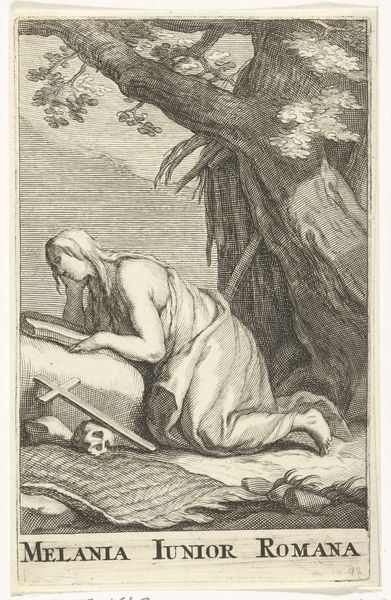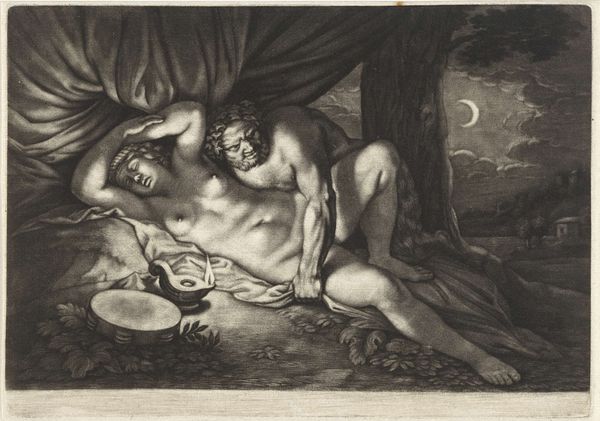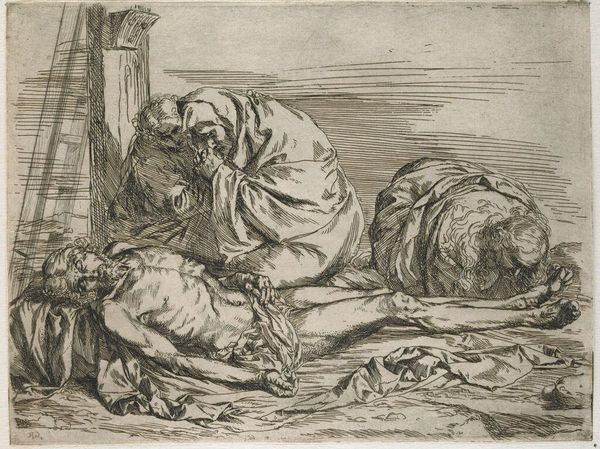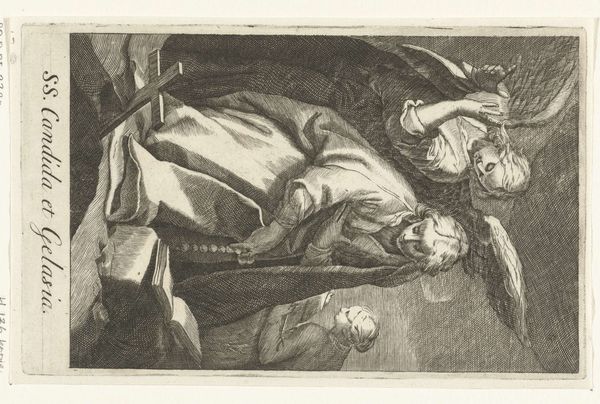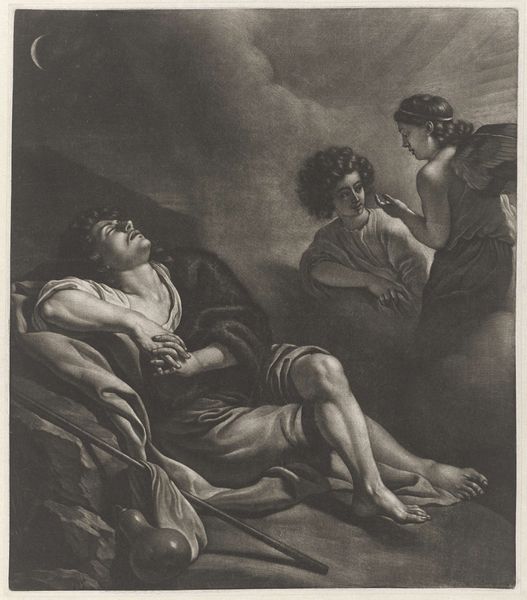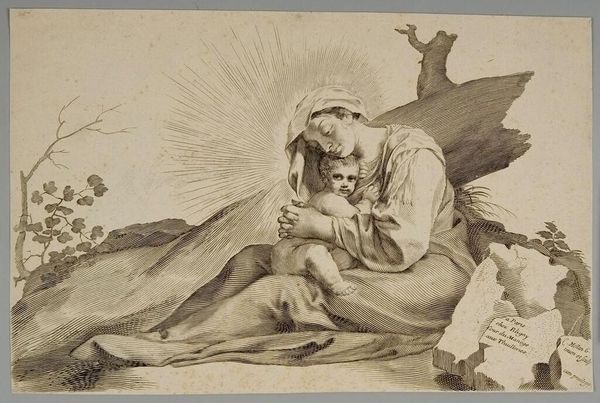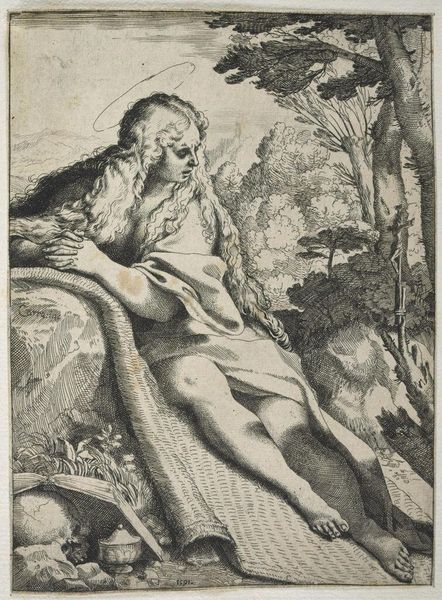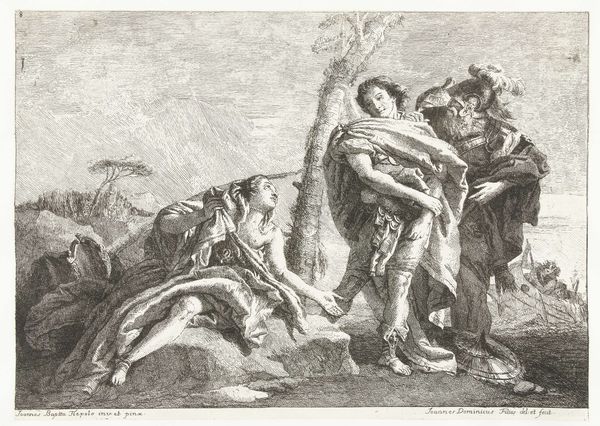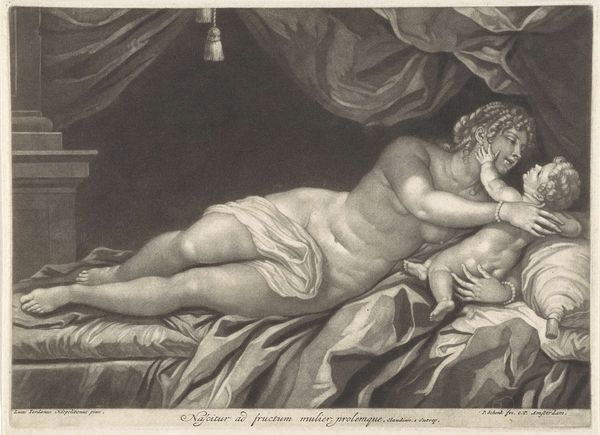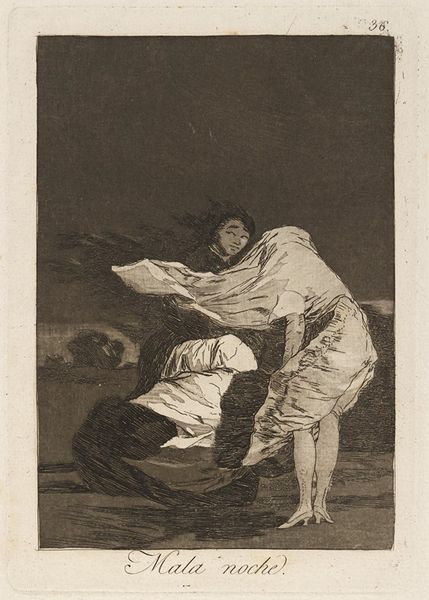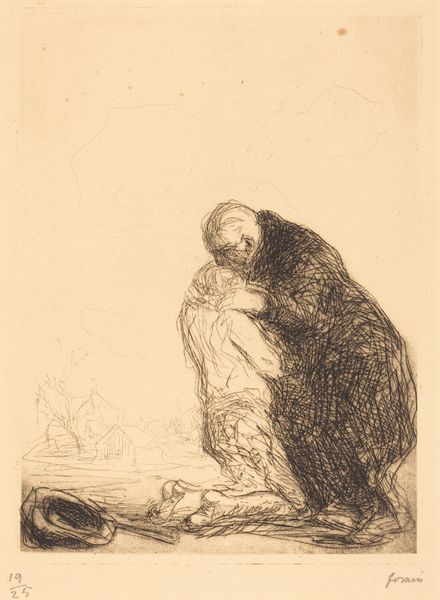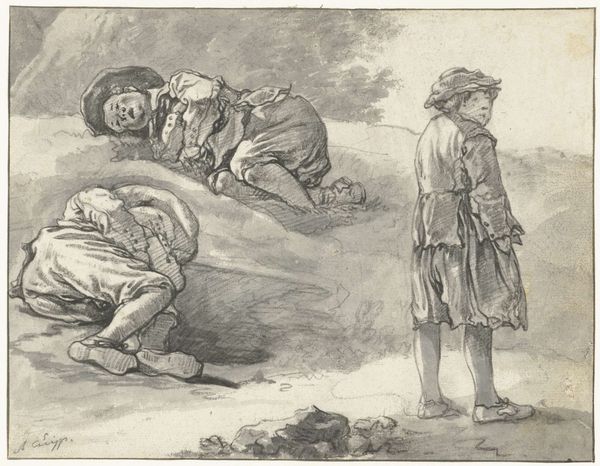
painting, oil-paint
#
narrative-art
#
baroque
#
painting
#
oil-paint
#
landscape
#
figuration
#
christianity
#
men
#
history-painting
Dimensions: 233 x 179 cm
Copyright: Public domain
Curator: Jusepe de Ribera's “Jacob’s Dream,” painted in 1639, currently resides in the Museo del Prado. Editor: It’s… striking, isn't it? Somber in tone. The darkness sort of cocoons the figure. A powerful, yet vulnerable stillness. The textures—the rough bark, the rocky earth—all feel very immediate. Curator: Absolutely. Ribera situates this particular biblical scene—Jacob's famous dream of a ladder to heaven—within a raw, deeply human context. Consider the landscape itself; it is barren, wild, mirroring Jacob’s own uncertain and solitary journey. The earthy, muted tones accentuate the precarity. Editor: Right, but it's not just representation; it's the oil paint itself, how Ribera layers it, the impasto around the face suggesting a troubled sleep. We have to acknowledge that he’s using readily available pigment that directly contributes to a particular view of poverty. Labor informs every brushstroke. Curator: I agree. But isn't this a deliberate artistic choice, an engagement with the harsh realities experienced by many, reflecting a particular historical context? Ribera was painting in Naples, a city grappling with poverty and social unrest. Jacob becomes an allegorical figure, symbolizing resilience amidst hardship. His vision speaks of hope when there is little. Editor: And that vision arrives from a heaven created with pigment sourced from the very earth that Jacob lies upon. Note how earth, material and story, form converge. The materiality itself argues against some neat separation between sacred and secular. Curator: Perhaps this intersection complicates these separations by inviting critical contemplation on what is sacred and mundane, the power dynamics that surround divine intervention, which impacts individual and collective experience. Editor: Well said. This piece offers a beautiful articulation of this concept, one we can observe in his choice of naturalistic colours. Curator: This piece underscores the possibility that visions of liberation emerge precisely from places of precarity. Editor: A critical consideration, no doubt, of what this image can reveal.
Comments
No comments
Be the first to comment and join the conversation on the ultimate creative platform.
